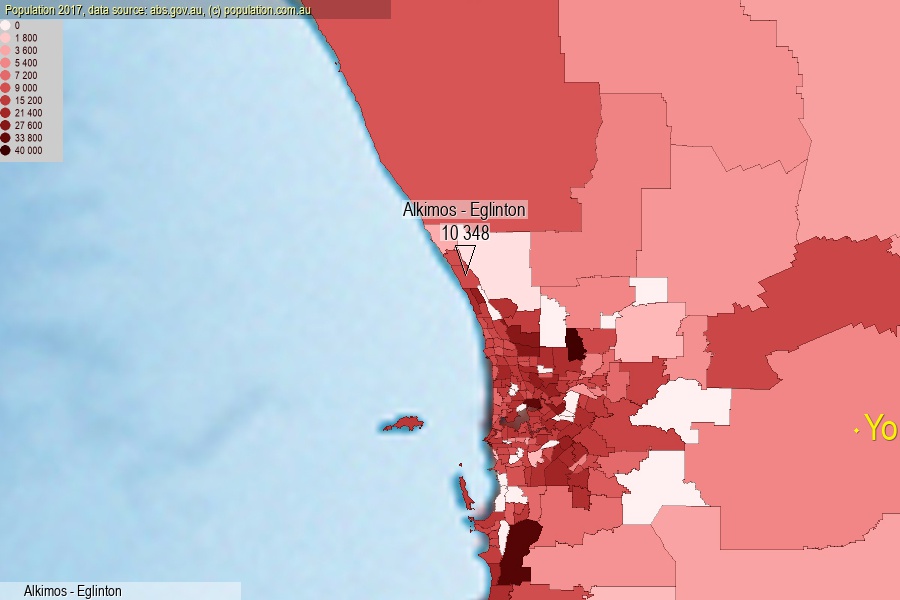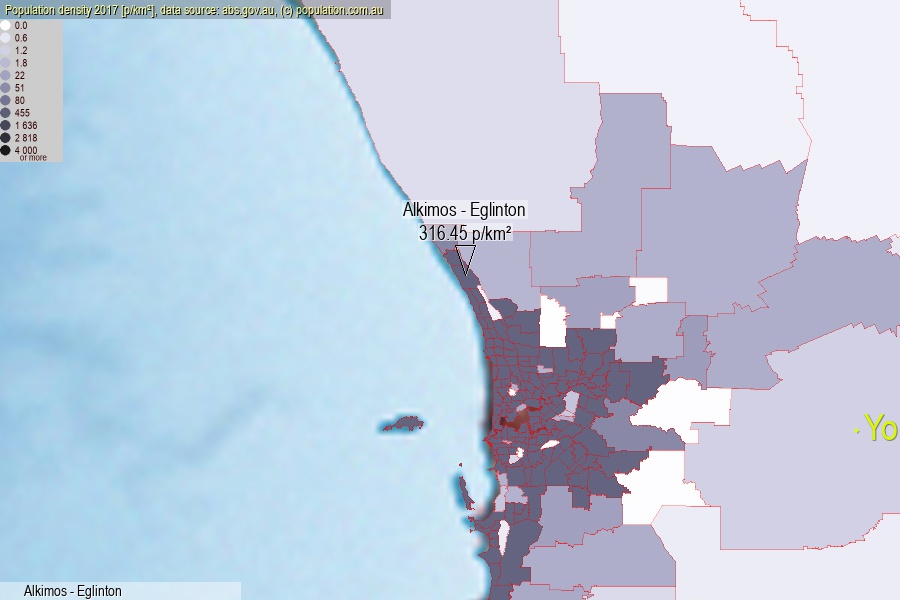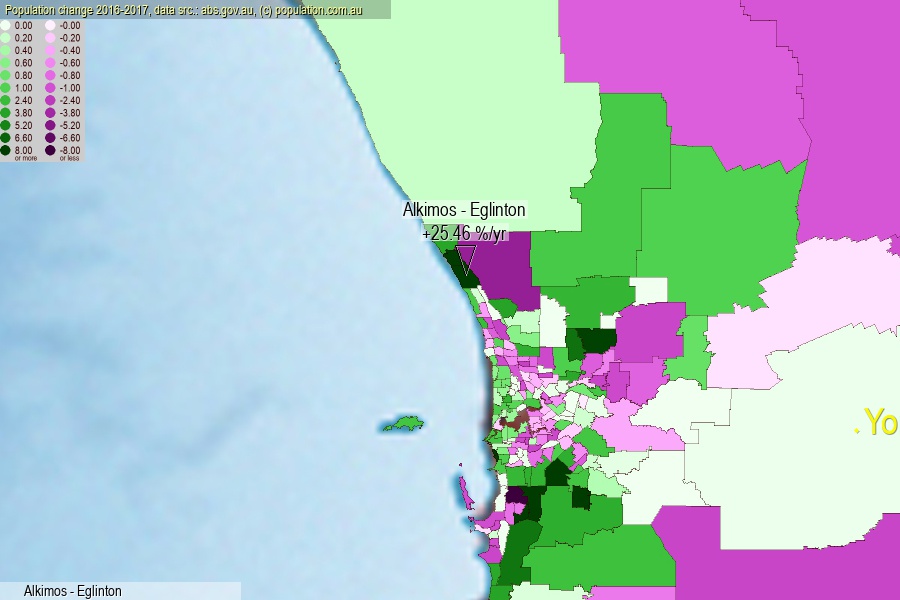 population.com.au
population.com.auLast official estimated population of Alkimos - Eglinton (as Statistical Area Level 2) was 10 348 people (on 2017-06-30)[2]. This was 0.04% of total Australian population and 0.399% of WA population. Area of Alkimos - Eglinton is 32.70 km², in this year population density was 316.45 p/km² . If population growth rate would be same as in period 2016-2017 (+25.46%/yr), Alkimos - Eglinton population in 2025 would be 63 521. [0]



Click to enlarge. Alkimos - Eglinton is located in the center of the images.
Population [people], population density [p./km²] and population change [%/year] [2]
View borders » (new window) [4]
[2001-2002] 0.00 %/Yr.
[2002-2003] -10.81 %/Yr.
[2003-2004] +3.03 %/Yr.
[2004-2005] -26.47 %/Yr.
[2005-2006] 0.00 %/Yr.
[2006-2007] -8.00 %/Yr.
[2007-2008] -30.43 %/Yr.
[2008-2009] 0.00 %/Yr.
[2009-2010] +68.75 %/Yr.
[2010-2011] +125.93 %/Yr.
[2011-2012] +926.23 %/Yr.
[2012-2013] +164.38 %/Yr.
[2013-2014] +91.06 %/Yr.
[2014-2015] +69.86 %/Yr.
[2015-2016] +53.57 %/Yr.
[2016-2017] +25.46 %/Yr.
[0] Calculated with linear interpolation from officially estimated population
[1] Read more about SA2 and Australian Statistical Geography Standard (ASGS) on abs.gov.au
[2] Population data from Australian Bureau of Statistics (Population and density: 2017; change: 2016-2017)
[3] Digital Boundaries: Australian Statistical Geography Standard (ASGS) 2016.
[4] Border coordinates are simplifyed using Ramer-Douglas-Peucker algorithm.